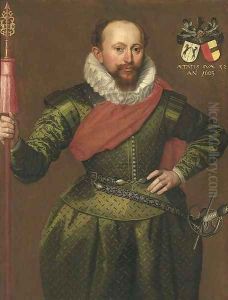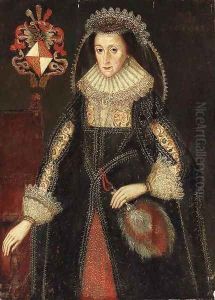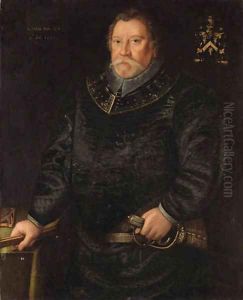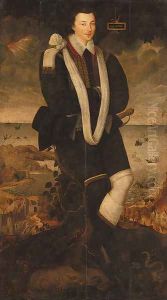Marcus The Younger Gheeraerdts Paintings
Marcus Gheeraerdts the Younger, also known as Marcus Garret or Marcus Gerritsz, was a Flemish artist born in Bruges, the son of the painter Marcus Gheeraerdts the Elder. His family moved to England in the early 1560s, and Gheeraerdts the Younger grew up in the milieu of the English court. His father was a painter and printmaker, and his mother was a member of a family of artists, which provided him with a fertile environment for developing his artistic talents.
Gheeraerdts the Younger is primarily known for his work as a portrait painter. He became prominent at the English court during the reign of Queen Elizabeth I and continued to serve under her successor, King James I. His work is characterized by meticulous detail and a clear, realistic style that was highly valued by his patrons. He is especially noted for his depiction of elaborate costumes and textiles, which were important status symbols among the nobility of the time.
The artist's career flourished when he became a favorite painter of Anne of Denmark, the queen consort of King James I. His portraits of the queen and other courtiers demonstrate his ability to capture the elegance and opulence of the Jacobean court. Gheeraerdts the Younger's portraits are considered some of the most important visual records of English nobility during this period.
Unfortunately, not much is known about his personal life, but his legacy as a portrait painter is well established. His works can be found in various museums and art collections, and they continue to be studied for their historical value and artistic merit. Marcus Gheeraerdts the Younger died in 1636, leaving behind a body of work that offers a window into the world of the English Renaissance and the early Stuart period.



